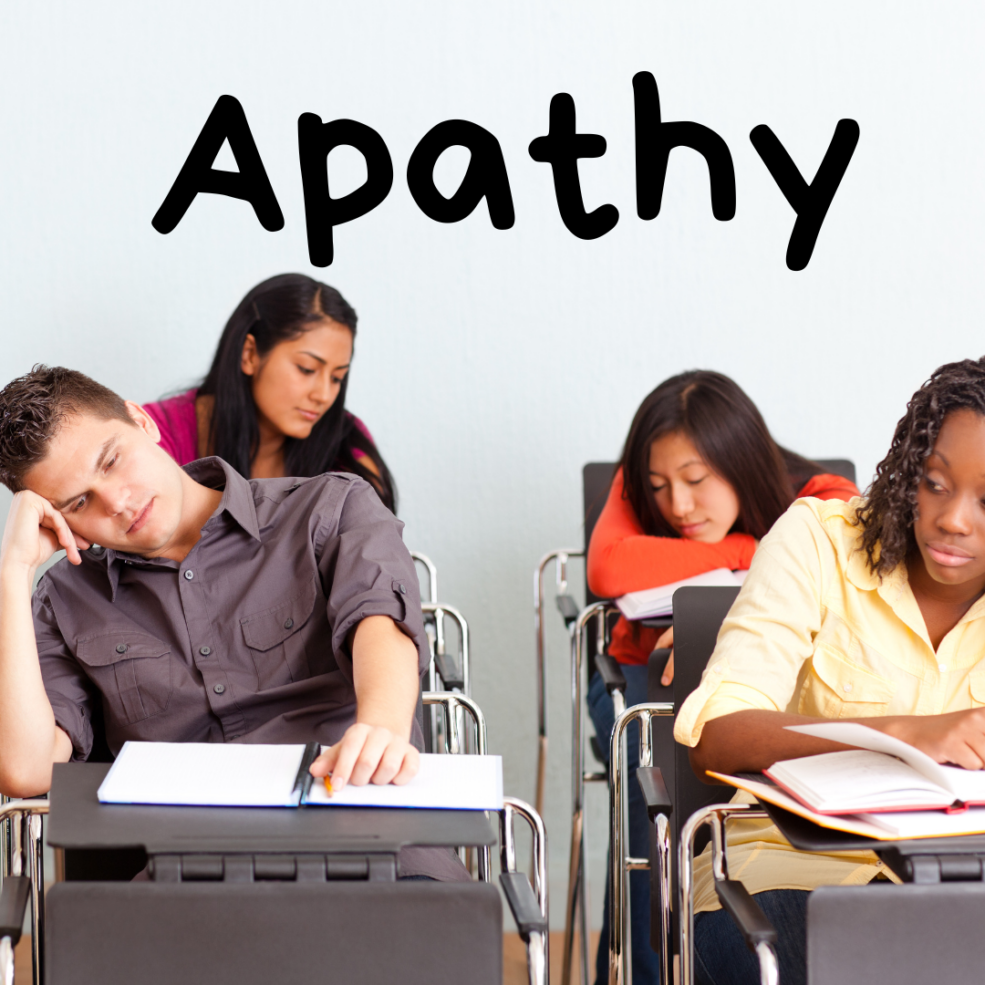Apathy is often described as a lack of interest, enthusiasm, or concern, and it’s a feeling that many of us have experienced at one time or another. In individual cases, apathy can seem harmless—perhaps just a temporary disinterest in daily tasks or a period of emotional numbness. However, when apathy spreads through a society, it can have profound implications, particularly in its connection to social unrest. Is there a connection to widespread apathy and the potential for societal upheaval, drawing on research from psychology, sociology, and political science?
Apathy: A Silent but Powerful Force
Apathy isn’t simply a matter of feeling uninspired or indifferent. According to psychologist Mihaly Csikszentmihalyi, who developed the concept of “flow,” apathy occurs when people are disengaged from meaningful activities, leading to a state where they neither feel challenged nor find enjoyment in what they are doing . This emotional state can be particularly dangerous when it becomes widespread, as it often reflects deeper societal issues, such as a lack of trust in institutions, social isolation, or economic disenfranchisement.
Apathetic individuals may withdraw from family, social, community or work life, feeling that their actions are insignificant or that change is impossible. This disengagement can create a vacuum where discontent simmers beneath the surface, setting the stage for family, social or community unrest. When large segments of a population are apathetic, it weakens the social fabric, as fewer people participate in civic duties, such as voting or community involvement, thereby eroding democratic processes and collective problem-solving.
The Connection to Social Unrest
Social unrest often arises when there is a perceived gap between what people expect from society and what they experience in reality. This gap can lead to frustration, anger, and eventually, protest or rebellion. Apathy plays a crucial role in this dynamic, as it can both precede and follow periods of such unrest we have witnessed on our streets recently.
When people feel apathetic, they may initially withdraw from social or political life, allowing issues to fester without opposition. This withdrawal can lead to a situation where problems are ignored until they reach a breaking point, at which time the apathy can quickly transform into anger and activism.
Political scientist James C. Scott has noted that apathy among the oppressed or disenfranchised can serve as a form of “everyday resistance”—a quiet but persistent refusal to engage with a system perceived as unjust . However, this resistance can eventually give way to more overt forms of protest when circumstances change, such as when a triggering event occurs, or when the population’s patience runs out.
Apathy as a Precursor to Unrest
Several historical examples highlight how apathy can be a precursor to family or social unrest. For instance, the years leading up to the French Revolution were marked by widespread apathy among the peasantry and lower classes, who felt powerless in the face of an increasingly out-of-touch monarchy. This apathy turned into fury when the economic conditions worsened, leading to one of the most significant uprisings in history.
More recently, political scientists have observed similar patterns in modern democracies. In countries where voter turnout is low, and civic participation is minimal, apathy can be a warning sign of potential instability. When people no longer feel invested in their society, they may be more likely to support radical changes, sometimes leading to abrupt and destabilizing political movements.
The Role of Social Media in Amplifying Apathy and Unrest
In today’s digital age, social media plays a complex role in both fostering apathy and inciting unrest. On the one hand, the constant barrage of information can lead to a sense of overload, causing people to disengage and become apathetic. On the other hand, social media platforms can quickly mobilize these same apathetic individuals when a spark of outrage captures public attention.
This dual role of social media has been evident in various social movements around the world. For example, the Arab Spring was initially fueled by widespread apathy towards corrupt regimes, but this apathy was swiftly transformed into action through the organizing power of social media. What began as passive discontent quickly escalated into a series of uprisings that reshaped the political landscape of the Middle East.
Addressing Apathy to Prevent Unrest
Given the connection between apathy and social unrest, addressing widespread apathy is crucial for maintaining social stability. This requires more than just encouraging people to vote or participate in civic activities; it involves tackling the root causes of apathy, such as social inequality, economic disenfranchisement, and a lack of trust in institutions.
Creating opportunities for meaningful engagement, fostering a sense of community, and rebuilding trust in social, business and educational systems are all essential strategies for combating apathy. Educational initiatives that promote critical thinking and civic responsibility, as well as policies that address economic and social inequalities, can help to re-engage apathetic populations and prevent the kind of disillusionment that can lead to unrest.
Apathy as a Quiet Catalyst
Apathy is often seen as a passive emotion, but its effects on society can be anything but. When widespread, apathy can erode the social fabric, weaken democratic institutions, and set the stage for social unrest. By understanding the relationship between apathy and unrest, we can better address the underlying issues that lead to both, creating a more engaged, resilient, and stable society.
Do get in touch to see how we can help ease apathy in your organisation and create instant rapport with your colleagues and clients.
References
- Csikszentmihalyi, M. (1990). Flow: The Psychology of Optimal Experience. Harper & Row.
- Scott, J. C. (1985). Weapons of the Weak: Everyday Forms of Peasant Resistance. Yale University Press.
- Goldstone, J. A. (2014). Revolutions: A Very Short Introduction. Oxford University Press.
- Shirky, C. (2011). The Political Power of Social Media: Technology, the Public Sphere, and Political Change. Foreign Affairs.
- Russell, B. (1932). In Praise of Idleness and Other Essays. George Allen & Unwin Ltd.

